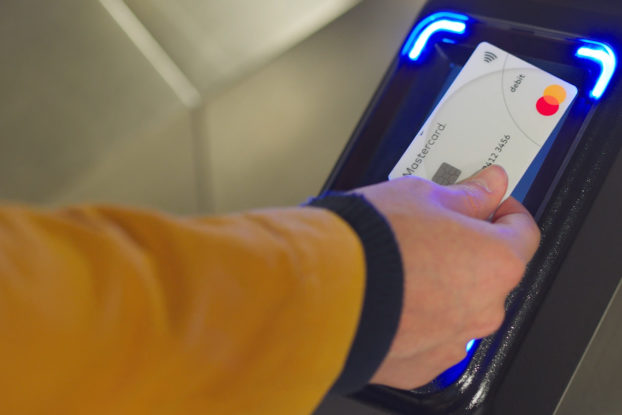The Coronavirus Is Pushing Wider Acceptance of Contactless Payments

As the economy reopens, businesses are rapidly adopting touch-free payment technologies to help keep both consumers and staff safe.
Diana Gamboa was in the middle of the busy tax preparation season when the COVID-19 outbreak forced her business, Diana’s Tax Services, into shutdown. As she contemplated a late April reopening, Gamboa knew she would need to change a few things.
Along with maintaining greater distance between her staff of 12 and asking clients not to congregate in the waiting area of the Las Vegas tax preparation and business consulting firm, which caters to the Spanish-speaking community, Gamboa also took a hard look at all the physical items in the office. She already had a Bluetooth-enabled contactless system through Square, but she wasn’t using it. Coronavirus changed that.
Now she uses the contactless reader to take Apple Pay, Samsung Pay and Google Pay. Clients who don’t use these payment methods can receive an invoice and enter the credit card details on their own phones.
“I was taking into account my own health and my employees’ health,” Gamboa said. “And we needed clients to feel safe that we were taking their health seriously, too.”
Gamboa no longer accepts payment by check, cash or physical cards, and plans to continue contactless technology even after the COVID-19 pandemic subsides.
As all 50 states start to reopen in some manner after two-and-a-half months of shutdown, businesses like Diana’s Tax Services are working on ways to keep staff and customers safe, and increasingly that’s around the area of payments.
Cash is notoriously germ-ridden. One study found that bacteria and viruses can survive on banknotes and coins and could lead to infections. Credit cards, too, can be a vehicle for transmission of viruses, if consumers hand over their cards for processing, enter their password or add a gratuity on a touchpad.
Contactless payment methods, like tap-and-go cards, digital wallets or online prepay, avoid all of that, allowing consumers to pay without physically touching anything in a store.
Touch-free payments had already been gaining wider acceptance, especially in transit systems and quick-serve restaurants, where shaving a few seconds off each transaction made the difference between efficiency and choking lines. Now, due to the coronavirus, more businesses are adopting it.
